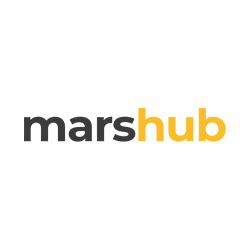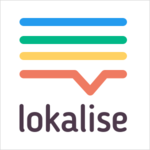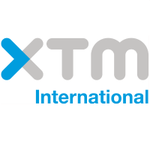Yes, most modern Translation Management Software is built to work on a variety of devices and platforms. This means that the software can be used on any desktop computer, laptop, tablet, or mobile device, regardless of operating system. Many of these tools also include cloud-based services, allowing you to view your translations from any location with an internet connection. This ensures that you can work on projects seamlessly regardless of the device or platform you're on.
List of 20 Best Translation Management Software
Boost your translation efficiency and competitive edge with PROMT, solution using neural machine translation technology. With support for Windows, iOS, and Android, PROMT offers secure and accurate translations in over 40 languages. Seamlessly integr...Read More PROMT
Quoroom solution for streamlined management of equity, debt, and options, along with cutting-edge fundraising capabilities. This comprehensive software offers highly advanced features for effective financial asset management, eliminating the need for...Read More Quoroom
memoQ: a translation management system created for enterprises, language service providers, and translators. With automated quality checks and customizable project tracking, memoQ streamlines workflows, leading to enhanced efficiency and exceptional...Read More memoQ
Wordbee is a translation management system that streamlines your localization process. This powerful platform offers automated quoting and invoicing, along with seamless integration with your CMS for effortless project management and top-quality tran...Read More Wordbee
Welcome to the revolutionary Phrase Localization Platform! Our cutting-edge translation and localization solutions, fueled by advanced AI technology, streamline and accelerate the content localization process. With our comprehensive suite of products...Read More Phrase Localization Platform
QuaHill is a project management tool, is your reliable ally in streamlining all aspects of your workflow. From handling client inquiries to managing vendor access and invoicing, QuaHill offers a tailored approach for maximum efficiency and flexibilit...Read More QuaHill
Ginger is a writing companion powered by advanced AI technology. Elevate your writing with contextual corrections and style enhancements, trusted by over 8 million loyal users. Seamlessly integrate Ginger across multiple platforms for an efficient an...Read More Ginger
SDL Trados Studio is translation software that simplifies the localization journey. Its advanced capabilities and wide range of language support enhance workflow for translators and ensure top-tier, consistent translations for every project. With a g...Read More SDL Trados Studio
PhraseApp: the cutting-edge localization platform transforming the way you handle translations. With advanced AI technology and seamless integrations, streamline your global communication and ensure efficient and accurate content delivery. Reach a wi...Read More PhraseApp
Welcome to My Acclaro the translation management software that streamlines your localization projects. Our user-friendly platform allows you to effortlessly monitor progress and access all your translation needs in a centralized location. Say goodbye...Read More My Acclaro
BaccS is a software program specifically designed for freelance professionals and small businesses. With its intuitive interface, advanced tools, and streamlined processes, BaccS makes project management, invoicing, and client tracking easier than ev...Read More BaccS
MarsHub is a localization management software that simplifies your project management with its comprehensive set of tools. With a centralized platform, MarsHub brings together all involved parties, providing complete customization to suit your projec...Read More MarsHub
TOM Agency, a leading project management software tailored for translators. With a strong presence in the industry since the early 2000s, our software offers specialized features and dependable performance to streamline your translation projects. Whi...Read More TOM Agency
LSP.expert solution for language service providers. Streamline your project management, invoicing, and client communication with this user-friendly software. Stay on top of your finances and elevate your productivity with advanced features at your fi...Read More LSP.expert
Explore the powerful features of Across Language Server, a leading translation management system designed to streamline the process of handling multilingual content. Benefit from efficient project management, cost savings, and seamless collaboration...Read More Across Language Server
Locize is a localization management software that streamlines the translation process for websites, apps, and games. Our seamless integration and real-time updates make it effortless to reach a global audience. Our affordable solutions guarantee effi...Read More Locize
Wordfast Pro solution for translators, LSPs, and corporations seeking to enhance productivity and accuracy. As a standalone translation memory software, it offers a user-friendly interface and budget-friendly pricing, making it the ideal choice for e...Read More Wordfast Pro
Lokalise is an advanced localization platform that utilizes AI technology. From content translation to team collaboration, seamless integrations, and automated workflows, Lokalise simplifies the localization process for all types of content. With enh...Read More Lokalise
Gespoint Translator, the must-have language tool for businesses, travelers, and multilingual users. With cutting-edge features like instant translation, voice recognition, and multi-language capabilities, this advanced software streamlines communicat...Read More Gespoint Translator
XTM Cloud - an advanced translation management platform that streamlines and automates your localization processes. Effortlessly disseminate content in multiple languages with precision and consistency across all channels. Enhance productivity and pr...Read More XTM Cloud
Learn More About Translation Management Software
- What Is Translation Management Software?
- What Are The Recent Trends In Translation Management Software?
- Benefits Of Using Translation Management Software
- Important Factors To Consider While Purchasing Translation Management Software?
- What Are The Key Features To Look For In Translation Management Software?
- Why Do Businesses Need Translation Management Software?
- How Much Time Is Required To Implement Translation Management Software?
- What Is The Level Of Customization Available In Translation Management Software?
- Which Industries Can Benefit The Most From Translation Management Software?
- Conclusion
What Is Translation Management Software?
Translation Management Software (TMS) is a powerful tool that helps businesses and organizations manage translation projects more efficiently. It is a complete solution that automates the entire translation process, from project development to delivery. TMS provides a centralized platform that enables project managers, translators, and other team members to work more efficiently, decreasing manual duties and errors.
Its user-friendly design and advanced capabilities make translation jobs easier to manage, faster to complete, and less costly. At its core, TMS is a project management application that provides a full picture of translation projects, schedules, and budgets. It allows project managers to assign tasks, track progress, and interact with their team members. Furthermore, TMS includes built-in translation workflows to ensure consistency and quality across projects.
One of the most important advantages of TMS is its automation capabilities. It interfaces with translation memory (TM) and machine translation (MT) tools, allowing it to automate translation tasks. This technology not only expedites translation, but also ensures uniformity and lowers the need for manual labor. Furthermore, TMS provides advanced translation memory management, which enables enterprises to save and reuse translated content, lowering costs and time in future projects.
It also supports a variety of file formats, making it suited for a wide range of information, such as documents, websites, applications, and more. Another important characteristic of TMS is its ability to support several languages and localize material for different regions. This is critical for firms with a worldwide footprint and a multilingual consumer base. When choosing TMS, it is critical to assess its security and compliance capabilities. Look for TMS solutions that provide data encryption, user access restrictions, and are compliant with industry requirements like GDPR and HIPAA.
What Are The Recent Trends In Translation Management Software?
The demand for translation management software has increased in recent years as global communication and content localization have become more prevalent. As the translation industry evolves, new trends and technological developments occur, influencing the translation management software environment.
Here are some of the most recent trends to look out for in the field of translation management software:
1. Cloud-Based Solutions: With the rise of remote work and the requirement for flexibility and scalability, cloud-based translation management software has become highly popular. These solutions enable users to access the software from anywhere and interact in real time, making it easier to handle translation projects across borders.
2. Artificial Intelligence (AI) And Machine Learning (ML): AI and ML are automating and improving the translation process. Translation management software that incorporates AI and ML technology can increase translation accuracy, speed up the process, and lower expenses.
3. Integration With Machine Translation (MT): MT technology has advanced greatly in recent years, making it an important asset in translation management software. Integrating MT with translation software can improve translation speed and accuracy, hence increasing efficiency.
4. Automation: Time-consuming manual operations like project management, translation memory maintenance, and quality assurance can now be automated with translation management software. This reduces human error and saves time, allowing linguists to focus on the translation process.
5. Collaboration Tools: As translation teams become more diverse and dispersed, collaboration tools are becoming an essential part of translation management software. These solutions enable teams to collaborate smoothly, in real time, regardless of their location, enhancing communication and productivity.
6. Mobile-Friendly Interfaces: As the world becomes more mobile, translation management software with mobile-friendly interfaces is becoming increasingly important. Users may now use the program from their cellphones or tablets, making project management easier while on the go.
7. Multilingual Information Management: Many firms require translation management software that can handle both text and multimedia information, such as photographs, videos, and audio. The most recent translation management software includes tools for organizing and translating multilingual content, making it easier to reach a global audience.
Benefits Of Using Translation Management Software
Translation Management Software (TMS) is a useful tool for businesses and organizations who want to improve their translation processes and expand their global reach. This powerful software automates and centralizes the translation process, allowing businesses to manage many languages and translation projects with greater ease and efficiency. There are various advantages to using Translation Management Software, including enhanced productivity, higher quality, and cost savings.
Let's get into the specifics of these benefits and why investing in a TMS is a wise move for your organization.
1. Centralized Translation Management: One of the most significant advantages of adopting Translation Management Software is the ability to centralize all translation activities in one location. This implies that all translation projects, data, and resources are maintained on a single platform, allowing project managers and translators to communicate more easily and track progress. Everything in one place reduces the possibility of error, confusion, and delays, resulting in a smoother and more effective translation process.
2. Automation And Streamlining: Translation Management Software automates a large number of manual translation procedures, saving firms considerable time and effort. A TMS manages everything from file preparation and delivery to project tracking and billing, enhancing productivity and allowing staff to focus on more vital responsibilities. Furthermore, a streamlined workflow results in speedier turnaround times, allowing firms to get their products or services to market faster.
3. Consistency And Quality Control: Maintaining consistency and quality in translations is critical, especially for firms with a global footprint. TMS ensures this by offering a variety of tools for terminology and style management, translation memory, and quality assurance tests. These characteristics ensure that translations are accurate, consistent, and follow the brand's requirements and tone, hence increasing overall translation quality.
4. Cost Savings: Investing in Translation Management Software can result in significant savings for enterprises. Companies can save money on translation projects by automating processes and optimizing operations. Furthermore, centralization and consistency in translations reduce rework, saving time and resources. Furthermore, organizations can negotiate better rates with translators and improve their vendor management process, lowering their overall translation costs.
5. Scalability And Flexibility: Translation Management Software can readily scale to meet the needs of your growing firm. A TMS allows firms to simply add new languages, projects, and resources without increasing overhead expenses. Furthermore, most TMS provide cloud-based solutions, allowing organizations to use the software and manage translations from any location, making it a versatile and adaptable tool for businesses of all kinds.
Important Factors To Consider While Purchasing Translation Management Software?
When it comes to choosing translation management software, there are numerous critical elements to consider. These considerations will not only help you select the best software for your purposes, but will also ensure that your translation operations work easily and efficiently.
Here are some crucial aspects to consider before making your purchasing decision:
1. Translation Capabilities: The software's translation capabilities are the most important thing to examine. It should be capable of handling future languages as well as the languages you are now translating. Furthermore, the program should support a wide range of translation approaches, including machine translation, translation memory, and human translation, to meet a variety of purposes.
2. Integration: Another important consideration is how the program integrates with your existing systems and tools. It should be able to work seamlessly with your content management system, customer relationship management system, and other translation-related technologies. This will save time and effort, as well as lessen the likelihood of errors while transferring data between platforms.
3. Collaboration Features: Translation is a collaborative process that involves many stakeholders, including translators, editors, and reviewers. As a result, the software should offer features that encourage collaboration and streamline the translation process. Consider features like real-time collaboration, task management, and a single platform for communication and file sharing.
4. Customization Options: Not every organization has the same translation requirements. As a result, a one-size-fits-all approach may not be appropriate for all individuals. Choose a software that allows you to customize it to meet your individual needs. This not only gives you more control over the translation process, but also ensures that the software adapts to your business rather than the other way around.
5. Security: Translation entails managing sensitive and confidential data. As a result, it is critical to consider the security measures implemented by the software to protect your data. Look for features like encryption, access limits, and data backup options to protect the security of your data.
6. User-Friendly Interface: The software's interface should be intuitive and easy to use. A complex and confusing interface can prolong the translation process while also causing user annoyance and errors. You can request a demo or free trial to get a feel for the product and evaluate its usability.
7. Technical Support: No software is flawless, and there may be times when you require technical assistance. Consider the customer support and maintenance services provided by the software provider. Look for choices like 24/7 support and frequent updates to guarantee you can get help whenever you need it.
What Are The Key Features To Look For In Translation Management Software?
Translation Management Software (TMS) is an invaluable resource for businesses and organizations seeking to manage and expedite the translation process. However, with so many options on the market, it can be difficult for consumers to select the correct TMS for their individual requirements.
To help you make an informed decision, below are the essential characteristics to consider while considering translation management software.
1. Multilingual Support: This is the most important feature of a TMS because it enables you to translate content into multiple languages. Look for software that supports all of the languages you want, and if you intend to extend your business abroad, be sure the TMS can readily accommodate new languages in the future.
2. Integration Capabilities: A TMS that works seamlessly with your existing systems and tools can save you time and effort. Look for software that works seamlessly with content management systems (CMS), customer relationship management (CRM) systems, and other translation tools.
3. Translation Memory: Translation memory is a database that saves previously translated text, allowing you to reuse translations while improving consistency. This function not only saves time and effort, but it also promotes brand consistency and lowers expenses.
4. Workflow Management: A dependable TMS should include workflow management features that allow you to assign tasks and track progress. This feature ensures that the translation process runs smoothly and without errors.
5. Security And Data Privacy: Translation management software should include strong security features to protect sensitive data and comply with data privacy laws. Look for software that provides secure data storage, encryption, and scheduled backups.
6. Project Management: Select a TMS that includes project management capabilities including task assignment, deadline tracking, and collaboration tools. This can help you keep organized and meet project deadlines more effectively.
7. Reporting And Analytics: A TMS with reporting and analytics capabilities provides insights into your translation process, allowing you to discover areas for improvement and calculate the return on investment for your translation projects.
8. Machine Translation: Some TMS include machine translation as an add-on function, allowing you to automatically translate information faster. However, keep in mind that machine translation may be less accurate than human translation.
9. Customer Assistance: Look for a TMS supplier that provides dependable customer assistance and training to guarantee you get the most out of your software.
Why Do Businesses Need Translation Management Software?
Businesses now work on a worldwide scale, engaging with clients, partners, and customers in a variety of languages. However, handling numerous languages can be difficult, especially when translating vast amounts of text accurately and efficiently. This is where Translation Management Software (TMS) comes in. TMS is a software system that automates the translation process, enabling organizations to reduce their workflow and increase overall productivity. It provides a consolidated platform for managing all translation activities, including requesting translations, tracking progress, and storing translated information. But why do businesses require TMS? Here are some reasons:
1. Time And Cost Savings: Managing translation manually can be time-consuming and costly. TMS automates the entire process, minimizing manual labor while also considerably lowering translation time and expense. It also reduces the need for various translation tools, resulting in lower software and licensing expenses.
2. Streamlined Process: TMS provides a consolidated platform for managing translation efforts, allowing for smoother coordination between teams, decreasing communication gaps, and maintaining consistency throughout all translations. It also helps firms keep their brand identity by offering a vocabulary of acceptable language and phrases for translations.
3. Improved Translation Quality: TMS uses advanced translation technologies, such as translation memory, machine translation, and quality assurance tools, to assure translation accuracy and consistency. TMS also supports linguistic assessments and collaboration with experienced translators, allowing firms to provide high-quality translations.
4. Scalability: As organizations expand their global reach, the demand for multilingual content rises. TMS is highly scalable, allowing enterprises to handle massive volumes of translations while maintaining excellent quality.
5. Improved Project Management: TMS offers real-time visibility into the translation process through tools including progress tracking, project management, and customisable workflows. This enables organizations to better manage translation projects and make educated decisions to fulfill schedules and budgets.
How Much Time Is Required To Implement Translation Management Software?
When it comes to installing Translation Management Software, the time required can vary depending on several aspects. These considerations include your organization's size and complexity, the number of languages and content categories that must be translated, as well as the capabilities and customization options you need. On average, the implementation procedure can last from a few weeks to several months.
It has various steps, including installation, training, and customization. Depending on your individual requirements and objectives, you may need to integrate the program with other systems and platforms. The first step in implementation is to install the program, which typically takes a few hours to a day. This includes configuring the necessary servers, databases, and other technological elements.
Next, your team will need to go through training to learn how to utilize the software properly. This could take a few days or weeks, depending on the software's complexity and your team's prior expertise and skills. Customization is another critical component of implementation. This includes tailoring the program to your specific needs, such as integrating with your existing translation tools or designing workflows to streamline your translation processes.
The time required for customisation varies greatly depending on the complexity of your requirements. After installing the software, training your team, and making the necessary changes, you may begin utilizing it for translation projects. However, keep in mind that the software may require ongoing maintenance and updates to guarantee it runs smoothly and properly. Overall, the time necessary to install Translation Management Software is determined by your organization's demands and goals. It is critical to carefully analyze these variables and collaborate closely with the software vendor to achieve a smooth and effective implementation.
What Is The Level Of Customization Available In Translation Management Software?
Translation management software provides a variety of customization options to satisfy the different needs of enterprises and organizations who want to translate their content effectively and accurately. These features allow users to customize the software to meet their own needs and workflows, making it an invaluable tool for translation teams of all sizes. Most translation management software has customized project workflows, which allow users to define the many stages and duties involved in the translation process.
This can include anything from simple stages like translation and proofreading to more complex processes like in-country review and validation. To further improve their workflows, users can set up personalized notifications and automatic actions. In addition to process customization, translation management software enables users to form unique translation teams and assign specific responsibilities and rights to team members.
This guarantees that each team member has access to the appropriate tools and information for their function, thereby improving collaboration and efficiency. Another option for customization in translation management software is the ability to add custom fields and tags to translation projects and materials. This allows users to arrange and categorize their information in a way that is appropriate for their business or industry.
Users, for example, can add tags for different target languages, content kinds, or markets to make it easier to identify and manage specific content in the future. Furthermore, some translation management software allows you to change the appearance and branding of the platform itself. This can include adding the corporate logo, personalizing the color palette, and even developing a customized customer site where clients can view their translated information.
Overall, the level of flexibility offered by translation management software enables enterprises and organizations to adjust the program to their own requirements, resulting in a more efficient and effective translation process. It is critical to thoroughly evaluate the customization options provided by various software solutions to ensure that they match the specific requirements of your translation team.
Which Industries Can Benefit The Most From Translation Management Software?
Translation management software (TMS) has transformed how organizations interact with their worldwide audiences. To remain competitive in today's interconnected world, firms must supply localized information in different languages. TMS makes this process more efficient, accurate, and cost-effective, making it a vital tool for firms across all industries.
1. E-Commerce: In the digital age, e-commerce has emerged as a dominant force, with firms selling their products and services around the world. To attract a larger audience, e-commerce enterprises must offer their material in several languages. TMS simplifies this process by centralizing translations and automating operations, saving time and money while maintaining messaging consistency across all platforms.
2. Travel And Hospitality: The travel and hospitality sector serves an international clientele, making proper translations critical for promoting and communicating with customers from various cultures and languages. TMS helps hotels, airlines, and other enterprises in this market to provide localized information, such as websites, brochures, and menus, so improving customer experience and increasing bookings.
3. Healthcare: In the healthcare profession, proper translations are critical for providing medical information, instructions, and reports to patients from varied language backgrounds. TMS enables medical providers to transmit vital information with patients in their native languages, guaranteeing clear communication and preventing potentially serious misunderstandings.
4. Gaming: The gaming industry has a global audience, thus game makers must provide localized material to cater to players in many locations. TMS enables game producers to translate their game content, including as dialogue, level descriptions, and directions, into many languages, improving the gaming experience for players all over the world.
5. Advertising And Marketing: Businesses in the advertising and marketing business must tailor their campaigns to diverse markets and cultures in order to effectively reach their target audience. TMS enables the translation of marketing and advertising materials such as website content, social media postings, and adverts, ensuring that the message is understood and connects with the local audience.
6. Legal: Legal documents, contracts, and agreements require accurate and dependable translations. TMS enables law firms and legal departments to manage translations for global clients and ensure that legal content is presented correctly in the local language.
Conclusion
Finally, Translation Management Software (TMS) has become an indispensable tool for enterprises and organizations seeking to streamline their translation processes. With its varied features and capabilities, it can assist businesses of all sizes and industries in successfully managing their multilingual content. Throughout this buyer's guide, we've covered the most important features and elements to consider when selecting a TMS, such as translation automation, project management, collaboration, integrations, and cost.
To choose the TMS that best matches their criteria, customers must first examine their individual objectives and ambitions. In addition, we have identified five of the market's top TMS platforms: Smartling, Memsource, SDL Trados, Transifex, and Phraseapp. Each has distinct strengths and price strategies, providing purchasers with a wide range of options. However, it is vital to highlight that a TMS's success is dependent on its implementation and the users' willingness to use its features.
To gain the best outcomes, train your team on how to utilize the TMS properly and consistently. Finally, we recommend purchasers to conduct extensive study and compare several TMS choices before making a decision. Examine your budget, feature requirements, and customer support to select the TMS that best meets your organization's objectives and goals. With the appropriate TMS, you can easily increase your global reach and engage with your foreign audience.
Translation Management Software FAQ's
Can Translation Management Software Be Accessed Across Multiple Devices And Platforms?
Is Translation Management Software Future-Proof And Adaptable To Emerging Technologies Like AI, Blockchain Or IoT?
Yes, Translation Management Software (TMS) is intended to be future-proof and adaptable to new technologies such as AI, blockchain, and IoT. TMS is always improving and keeping up with the most recent advances in language technology in order to increase its performance and efficiency.
TMS can give accurate and fast translations by combining AI with machine learning, whereas blockchain ensures safe and transparent translations. TMS may also readily interact with IoT devices, allowing for real-time and automated translations.
Is There A Free Trial Offered To Assess Translation Management Software Before Committing?
Yes, many translation management software firms provide a free trial period to allow potential customers to test their platform before committing to a paying membership. This allows customers to evaluate the software's capabilities and convenience of use, ensuring that it fulfills their particular translation requirements. Free trials normally last 7-30 days and require users to give basic information to create an account.
Does Translation Management Software Offer Data Security Features And Meet Regulatory Compliance Standards?
Yes, Translation Management Software includes sophisticated data security safeguards to protect sensitive information. It employs encryption techniques to protect data during translation and storage. Furthermore, most Translation Management Software adheres to regulatory requirements such as GDPR, HIPAA, and ISO to protect the confidentiality of all data. Translation Management Software's features include advanced access restrictions, audit logs, and secure data storage options.
Can Translation Management Software Integrate Seamlessly With Existing Tools And Platforms?
Yes, Translation Management Software (TMS) can work seamlessly alongside existing tools and platforms. This is accomplished through Application Programming Interface (API) integration, which enables data exchange and synchronization between the TMS and other instruments.
This assures a seamless process and boosts efficiency by removing the need for human data entry. TMS can also be integrated with Content Management Systems (CMS) and Customer Relationship Management (CRM) platforms, resulting in a more unified and efficient approach to translation management.






















